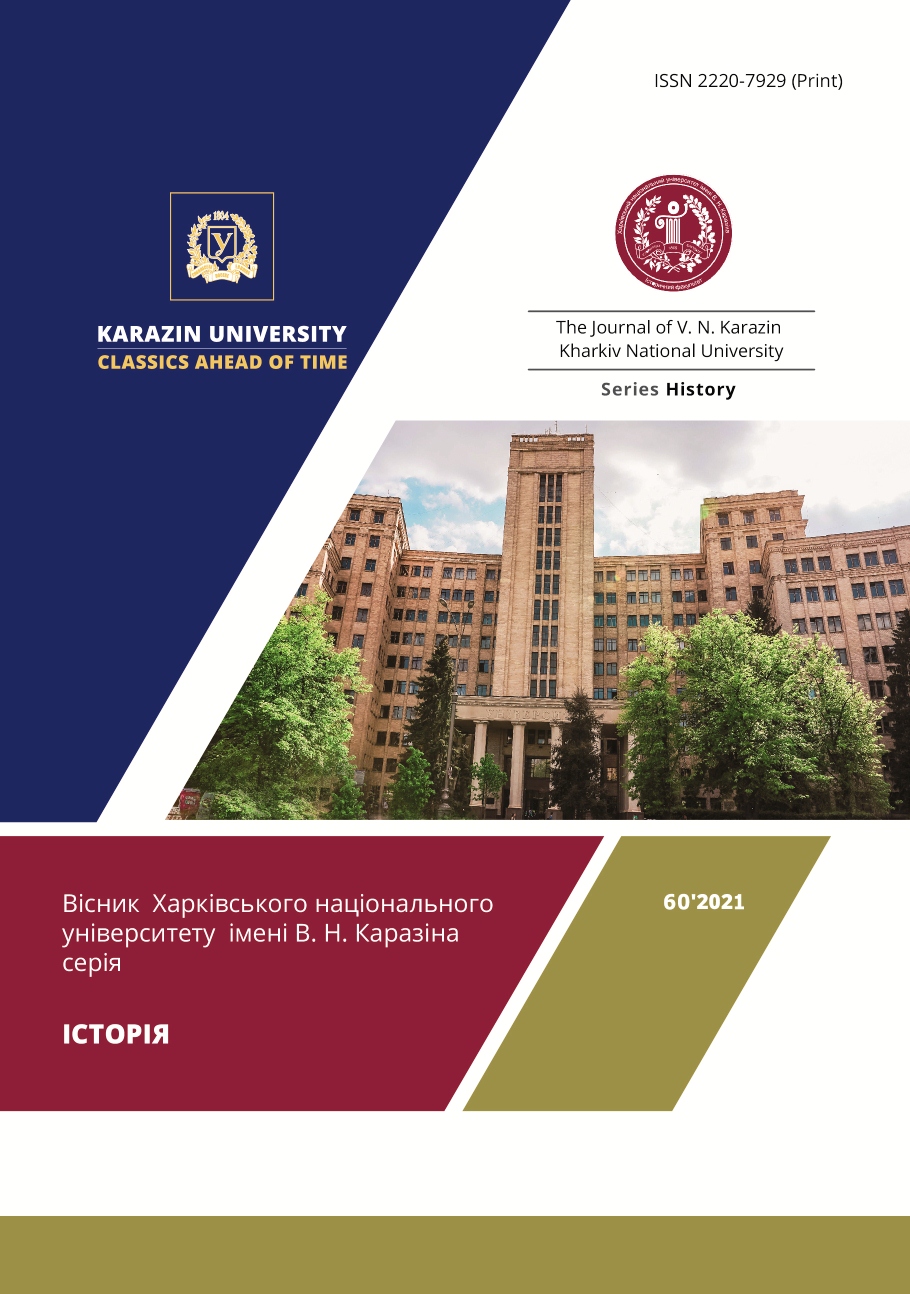Походження й становлення образу богині Афіни в олімпійському пантеоні
Анотація
Стаття присвячена дослідженню формування образу богині Афіни як представниці олімпійського пантеону богів. Слід зауважити, що наразі дискусійними залишаються досить багато проблемних аспектів у дослідженні давньогрецької релігії та міфології. Зокрема, можна відзначити, що в історіографічній традиції більш детально розглядали сам культ богині Афіни та Панафінеї, тоді як питання про сутнісне походження її образу й теоніма досить дискусійне та менше висвітлене. Дослідження саме цих питань дозволить проаналізувати трансформацію образу богині та з’ясувати її роль і місце серед інших богів-олімпійців. На основі аналізу джерел зроблено висновок про те, що образ богині Афіни є досить давній та належить ще до часу крито-мікенської епохи. Проте сам теонім за даними лінгвістичного аналізу має індоєвропейське походження. Уже в мікенський період богиня була відома давньогрецькому населенню та на її честь називали міста. Аналіз джерельної бази дозволяє говорити про сутнісний зв’язок образу богині Афіни з мінойським Верховним жіночим божеством, зокрема йдеться про збереження зооморфних рудиментів в описі її зовнішнього вигляду та наявність одного з основних атрибутів егіди — щита з козячої шкіри. Також на Криті було виявлено статуї, що зображують богиню, яка тримає в руках змій, а в більшості грецьких міфів простежується тісний зв’язок Афіни зі зміями. Це стає більш переконливим через наявність функційної подібності між мінойським божеством та власне Афіною. Також у цій роботі здійснено архетипну характеристику образу богині, виокремлено саме такі архетипи, як: войовниця, покровителька жіночих і чоловічих ремесел та уособлення мудрості. Архетипна характеристика виконує допоміжну роль у дослідженні, оскільки завдяки цьому можна дослідити еволюцію функційної характеристики богині. Отже, можна стверджувати, що, хоча теонім і має індоєвропейські корені, витоки сутнісного походження її образу безпосередньо пов’язані з мінойською релігією.
Завантаження
Посилання
Apollodor. Mifologicheskaia biblioteka. V: Sochineniia, t. 2. Leningrad, 1972. (In Russian)
Aristotel’. Politika. V: Sochineniia, t. 2. Moskvа, 1983. (In Russian)
Bolen, Dzh. Sh. Bogini v kazhdoi zhenshchine. Novaia psihologiia zhenshchiny. Arkhetipy Bogin’. Moskvа, 2005. (In Russian)
Burkert, V. Grecheskaia religiia: Arkhaika i klassika. Sankt-Peterburg, 2004. (In Russian)
Buzeskul, V. P. Vvedenie v istoriiu Gretsii. Sankt-Peterburg, 2005.
Cherednichenko, A. G. Indoevropeiskie mifotradtsii. Belgorod, 2006, s. 128-132.
Evripid. Ion. Moskvа, 1996. (In Russian).
Еliade, M. Istoriia very i religioznykh idei. Moskva, 2002.
Éskhil. Évmenidy. Moskva, 2005. (In Russian)
Flavii Filostrat. Zhyzn' Apolloniia Tianskogo. Moskva, 1985.
Gomer. Iliada. Leningrad, 1990. (In Russian)
Gomer. Odisseia. Moskvа, 2000. (In Russian)
Giro, P. Chastnaia i obschestvennaia zhizn' grekov. Sankt-Peterburg, 1995.
Kolobova, K. M. Drevnii gorod Afiny i ego pamiatniki. Sankt-Peterburg, 1961.
Losev, A. F. Afina Pallada. Grecheskaia kul'tura v mifakh, simvolakh i terminakh. Sankt-Peterburg, 1999.
Losev, Α. F. Olympiiskaia myfologiia v sotsialno-istoricheskom razvitii. Moskva, 1953.
Orficheskii gimn XXXIIІ. K Afine. Moskva, 1963. (In Russian)
Parker, R. Myths of Early Athens. Interpretations of Greek Mythology. London, 1987.
Robertson, N. The Origin of the Panathenaea. London, 1985.
Selivanova, L. L. Sravnitelnaia myfologiia. Ch.1. Drevnyi Vostok. Moskva, 2013. (In Russian)
Festiuzh’er, A. Zh. Lychnaia religiia grekov. Sankt-Peterburg, 2000. (In Russian)
Zaitsev, A. I. Grecheskaia religiia i mifologiia. Moskvа, 2005. (In Russian)
Авторське право (c) 2021 Анастасія Семибратська

Цю роботу ліцензовано за Міжнародня ліцензія Creative Commons Attribution 4.0.
Автори, які публікуються у цьому журналі, погоджуються з наступними умовами:
- Автори залишають за собою право на авторство своєї роботи та передають журналу право першої публікації цієї роботи на умовах ліцензії Creative Commons Attribution License, котра дозволяє іншим особам вільно розповсюджувати опубліковану роботу з обов'язковим посиланням на авторів оригінальної роботи та першу публікацію роботи у цьому журналі.
- Автори мають право укладати самостійні додаткові угоди щодо неексклюзивного розповсюдження роботи у тому вигляді, в якому вона була опублікована цим журналом (наприклад, розміщувати роботу в електронному сховищі установи або публікувати у складі монографії), за умови збереження посилання на першу публікацію роботи у цьому журналі.
- Політика журналу дозволяє і заохочує розміщення авторами в мережі Інтернет (наприклад, у сховищах установ або на особистих веб-сайтах) рукопису роботи, як до подання цього рукопису до редакції, так і під час його редакційного опрацювання, оскільки це сприяє виникненню продуктивної наукової дискусії та позитивно позначається на оперативності та динаміці цитування опублікованої роботи (див. The Effect of Open Access).




